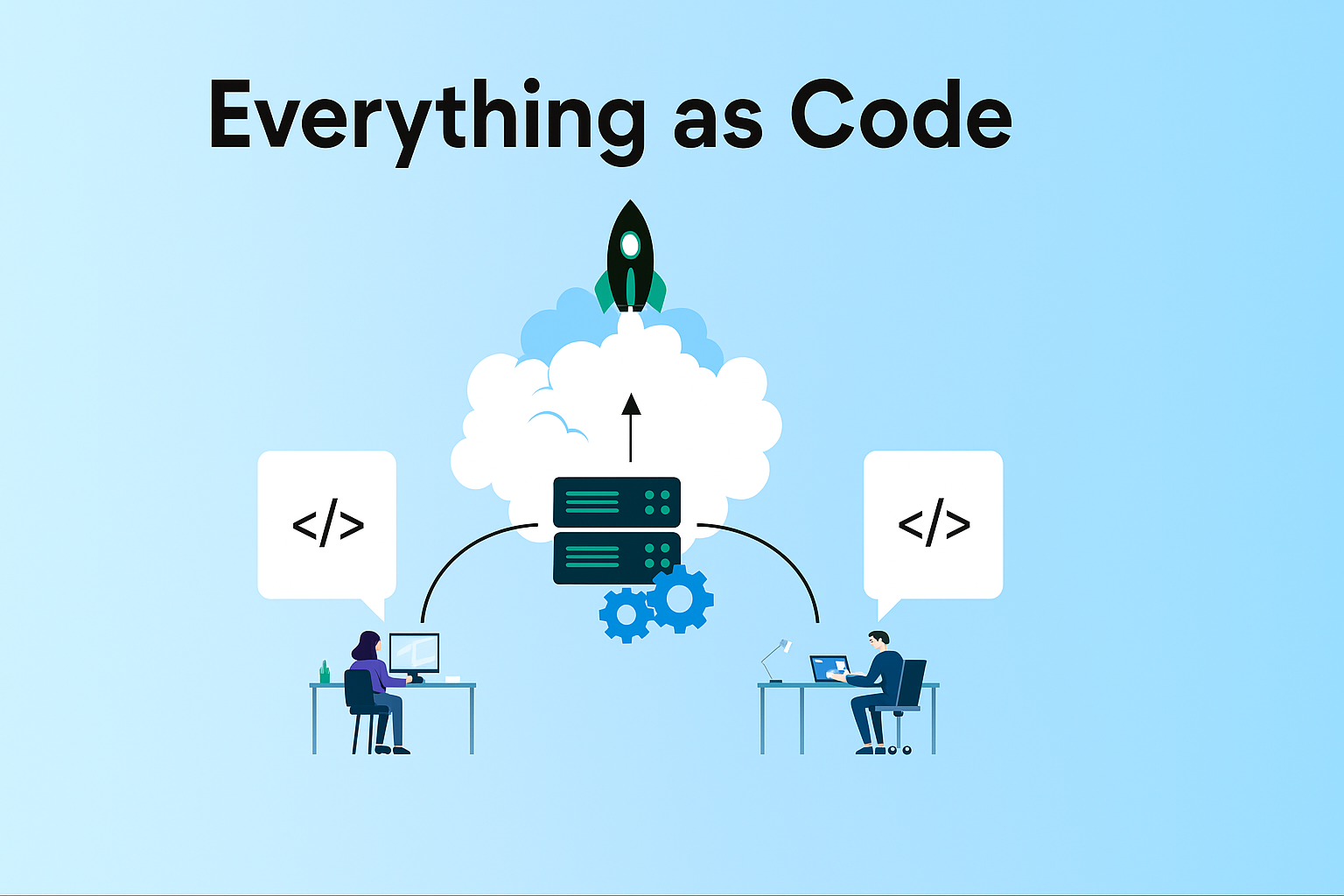Everything as Code
Beyond infrastructure — everything as code.

Everything as Code (EaC) is a philosophy that promotes defining, versioning, and automating every aspect of a platform through code. It originates from Infrastructure as Code, but extends into configuration, pipelines, security policies, and more.
Layers of Everything as Code
One of the most common mistakes is thinking that “doing DevOps” means installing Jenkins, using Kubernetes, or writing Terraform. Tools are important, but the key lies in the mindset: how they’re used, why they’re used, and how they fit into your processes.
Key principles
- Infrastructure as Code Define and deploy infrastructure using tools like Terraform, Pulumi, or CloudFormation.
- Configuration as Code Manage configuration with tools like Ansible, Helm, or similar, ensuring consistency across environments.
- Pipelines as Code Define CI/CD workflows in code to live alongside your repositories. E.g., GitHub Actions, GitLab CI.
- Policy as Code Ensure deployments follow rules using tools like OPA or Sentinel.
- Documentation as Code Write, version, and deploy your documentation using tools like Docusaurus or MkDocs.
Benefits of thinking in code
This approach enables reproducibility, collaboration, reviews, automation, and auditability. It also shortens onboarding time, increases stability, and fosters transparency.
Are there limits?
Not everything needs to be code. Some decisions or flows can remain manual or conversational. The key is to automate what brings value and occurs frequently.
Everything as Code is not just about using tools — it‘s about embracing a mindset that favors automation, transparency, and control in every technical decision.